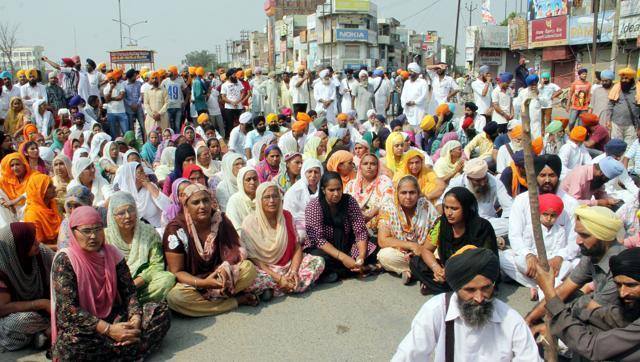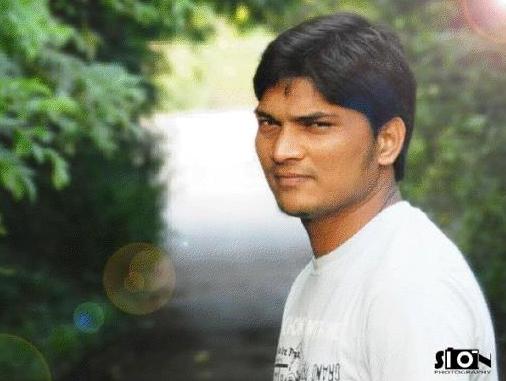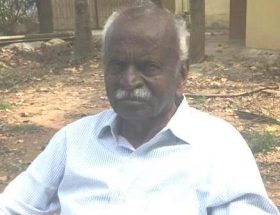Prabhsharanbir Singh & Jasleen Singh
Recently held Sarbat Khalsa has the potential to decisively shape the Sikh politics both in the Punjab and the diaspora. It is important that we analyze it in its complexity and from varying perspectives, than to rely on clichéd narratives prescribed by popular media. In order to do so, we need to keep in mind, a) the historical traumas faced by Sikhs throughout their history, b) political situation of Sikhs within the Indian nation-state, and c) the functioning of power through mediatized discourse in contemporary societies.

Most commentators on contemporary Sikh politics fail to take into account the impact of pre-colonial and colonial attempts at annihilating Sikhs. In 1762, Ahmed Shah Abdali attacked the Sikhs’ most sacred shrine, Harmandir Sahib (popularly known as the Golden Temple) in his attempt to eliminate Sikhs. Again in 1849, when the Sikh Kingdom was annexed by the East India Company, the then Governor-General of India, Lord Dalhousie, in a letter addressed to the Court of Directors of the East India Company, stated, “There never can be easy guarantee for the tranquility of India until we shall have effected the entire subjection of the Sikh people and destroyed its power as an independent nation.” It was not an empty threat. Immediately after annexing Punjab, he abolished the position of the Jathedar of Akal Takht and appointed a Sarbrah instead, who acted under the direct supervision of Deputy Commissioner of Amritsar. He also abolished Sikhs’ right to carry the Kirpan, an essential part of their identity. It was only in the early 20th century that Sikhs regained their right to carry the Kirpan. This colonial control and disciplining of Sikhs did not end with the British Colonial rule in 1947.
Sikhs within the modern Indian nation-state are routinely discriminated against and their collective demands are often met with political apathy or outright hostility. According to recently released census data, Sikhs are the most incarcerated religious group in India. After the June 1984 assault on Sikhs’ most sacred shrine, Harmandir Sahib, Punjab went through a decade of intense turmoil, during which security forces extrajudicially killed thousands of Sikh men and women. So far, very few police officers and security personnel have been tried for their crimes. Sikhs were subjected to the most brutal and largest massacre of minorities in India in 1984 following Indira Gandhi’s assassination. The culprits, who mostly belong to the Congress party, are still not punished despite the presence of eye-witnesses. They are not only roaming free but have enjoyed political positions since then. Article 25(b) of the Indian Constitution declares Sikhs to be part of Hindus, and RSS, the parent body of currently ruling BJP, reaffirms that from time to time. It was through these historical traumas that Sikhs entered the 21st century. These traumas still reverberate in the collective Sikh psyche. Most liberal commentators, echoing government discourse, advise Sikhs to just forget the “Black days” of violence in Punjab without ever talking about punishing the guilty police officers and politicians. The unresolved historical trauma cannot be wished away. It returns again and again to haunt the people and politics of that region unless a solid resolution is found.
The physical violence, however, never acts alone, it is always accompanied by symbolic violence. The desecration of the Sikh scripture, most recently, represents both physical and symbolic violence against the Sikh community. It is an overt sign to violently dismember a central aspect of the Sikh faith that has affective ties with people’s own sense of security in India. However, the nation-state draws its primary strength from the ability to exercise symbolic violence against marginalized groups. It is this symbolic violence that renders a targeted community politically marginalized and excluded from meaningful and constructive politics. This political marginalization and exclusion should be read as the root cause of broader malaise felt by the Sikh community.
French sociologist Pierre Bourdieu cautions us against symbolic violence by describing it as a mode of domination that often goes unrecognized. Precisely because this violence goes unrecognized, that is why it is also more dangerous. Discursive violence legitimizes state’s physical violence through language and propaganda, by symbolically controlling how particular issues are framed. The media then uses this symbolism to continue to perpetuate a specific state narrative. Amandeep Sandhu’s article, “Subverting a Popular Movement: How The Sarbat Khalsa was Hijacked by Radical Sikh Bodies,” published in the Caravan Magazine is one such case.
Sandhu frames his article by reinforcing the already over-used notion of the “radical Sikh”. The term “radicals” is generally evoked to identify and separate those that seem to threaten the “unity and integrity” of the Indian nation-state. These groups are ghettoised not by their ideological leaning but by the act of despise and intentional neglect by the nation’s political and intellectual elites. The Sikh struggle in Punjab emerges from this affective neglect and the continuous processes of dehumanization, over the last century.
On November 10, 2015, Sarbat Khalsa was organized at Chabba village in Amritsar district of Punjab. This event was organized to bring attention to the scores of unchecked incidents of desecration of Guru Granth Sahib and to liberate the highest Sikh institutions, like Akal Takht and SGPC, from the control of Mr. Parkash Singh Badal, chief minister of Punjab. A few days prior to the event, the Punjab government called in thousands of police and armed forces to create blockades for all those trying to attend the event. The bus companies were harassed and forced to refuse services to those traveling to Amritsar by threatening to revoke their commercial licenses. The police also personally intimidated and attempted to turn people back. This led to thousands of people being stranded, or forced out of attending Sarbat Khalsa that day. It is noteworthy that, despite all the trials and tribulations, more than 200,000 people were able to attend the event from all across Punjab and abroad.
Over the last few days, however, the Indian mainstream media has tried to erase the gravity of this large body of individuals who were able to gather that day. They continue to frame the event as one that was “hijacked by radical Sikh bodies”, as Amandeep Sandhu puts it, while blatantly ignoring the roaring crowd that had welcomed the news of Bhai Jagtar Singh Hawara being anointed as Akal Takht Jathedar, and Bhai Dhian Singh Mand as interim Jathedar. Mr. Sandhu’s article is in line with several other writers who use Indian state’s narrative and do not wish to compromise their “moderate” stances in the attempt to be sincere to the emotive and political desires of Sikhs, as that could categorize them as “radical”. Their narratives paint a certain indecisive image of the community, as part of discursive violence, that continues to frame the events and its people as “fringe”/”radical”.
The nation-state capitalizes on this fear of being seen as radical with the use of narratives against the target community, to further control and inflict violence by means of force and often times with the use of law. Following Sarbat Khalsa, the Indian Police arrested several Sikh leaders and journalists under the “Preventive Detention” act. A day later, some of those arrested were charged with sedition, under section 124A of the Indian Penal Code. The crime of sedition carries a maximum penalty of life sentence. It is strange that the charge of sedition, which is associated with the government of India, is applied to those who had gathered with the aim to take control of their Sikh religious institutions.
It is important to note here, that India is among a few countries where preventive detention is legal, it is generally used sparingly unless a country is ruled through a dictatorship or has less concern for the protection of individual rights. In India, the history of preventive detention dates back to the British rule when under the Bengal State Prisoners Regulation – III of 1818 the government was enabled to detain anybody on mere suspicion. The Sedition act was first inserted into the Indian Penal Code in 1898, under British colonial reign over India, and it was later amended by the Indian parliament to make it broader and more severe. The Indian nation-state under its new ‘democracy’ found it to be fitting to continue to implement colonial laws against its people. While Mr. Sandhu is worried about the potential undermining of the Indian nation’s laws, he conveniently ignores their colonial history and the fact that they have repeatedly failed to provide justice to the Sikh community over several decades.
The mainstream Indian media continues to frame these arrests as that of “radical Sikh leaders” even when there was nothing during the event that was remotely exciting hate or was suggestive of malicious intent. The present law does provide provision for expressing disapprobation of the administration and acts of the Government (see, 124A Sedition act: Explanation 3). Writers like Mr. Sandhu, however, continue to use labels like “radical” towards those Sikhs who are critical of the Indian state’s policies towards Sikhs. He distances himself by labeling the masses that had shown a collective dissent as “hardliners,” “radicals,” and “ghettoised”. What this comes to reveal is that the state itself is intolerant of Sikhs who refuse to live within its politics of violence. Mr. Sandhu faces a dilemma that is much too common to the Sikh psyche in Punjab: is he “a Sikh first and then Indian, or vice versa, or only one of the two?” As clearly, it is not possible for Sikhs to live within the Indian state as legitimate citizens without compromising their dignity, their religion, their life, or their struggle to survive.
~~~
Prabhsharanbir Singh is a Doctoral Candidate at the University of British Columbia who has been studying Punjab politics for over a decade.
Jasleen Singh is a Masters student at Rutgers University who is studying contemporary Sikh politics in India and the diaspora.
Image courtesy: the net










